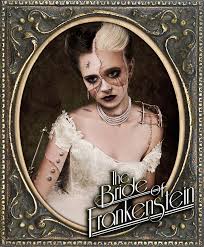jeffach.deviantart.com
If the experts at Glamour, Grazia, Cosmo et al. are right, then us ladies are only ready to leave the house and inflict ourselves upon the world when the following ‘body parts’ are correctly assembled:
- Locks or alternatively mane (if you’re feeling fierce)
- Pins
- Talons
- Tootsies
- Peepers
- Pout
As I understand it, the construction of these parts is meant to result in Angelina Jolie. However, the image I am left with is the lovechild of Rapunzel and a lion, with needles for legs, flashing hawk-like talons. Aspiration is not what I feel.
While it must be difficult for magazine writers to avoid repetition when endlessly discussing how to perfect eyes, lips, nails, legs and hair, the constant use of words like pins is not only a patronising attempt to create a linguistic community (despite the fact that none of their readers ever use those words), it also does some disturbing work in objectifying women’s bodies.
Pins are sharp objects, talons and manes belong to animals, and peepers sound like something a stalker might use. What all these terms have in common is a lack of humanity and a forced sense of frivolity, not to mention a complete failure to resonate with the way women think and talk about their bodies.
That’s not to say magazine language has no influence, however. A lot of attention is paid to the visual side of objectification, with important discussions around the way images of women’s bodies are cropped, dismembered and photoshopped into idealised body parts. But the language of beauty is just as alienating, working to make our bodies seem like haphazard collections of objects that don’t belong to us.
It’s strange that this formula continues to dominate women’s magazines even in an era when women writing blogs, journalism, novels and tweets are showing that we neither read nor write that way. Our lips are made for talking, not pouting, and if the magazines could realise this they might finally be able to speak to us.



November 28th, 2013 at 12:17 pm
Great blog. Love the truth of the last line. Whilst images within women’s magazines are easily connected with falsity and objectification, magazine language (and in fact language generally, as a social construction of identity) is much more socially ingrained, accepted and ignored, and more needs to be done to highlight and combat the detrimental use of language within mainstream culture.
November 28th, 2013 at 6:00 pm
Thank you! I agree, it’s strange how we all know that magazine language is absurd and damaging, but we don’t pay much attention to it – or its presence in the wider world. Though fortunately no one I know yet refers to their legs as pins 😉
December 18th, 2013 at 7:54 pm
“the constant use of words like pins is not only a patronising attempt to create a linguistic community, it also does some disturbing work in objectifying women’s bodies.”
I hadn’t thought about how these words could relate to objectification before. Very interesting. Thanks.
March 27th, 2014 at 6:28 pm
Yesssssss. It was “forced frivolity” that really got me.
March 30th, 2014 at 11:48 am
Haha, thanks. I wonder if the magazine writers feel the same…